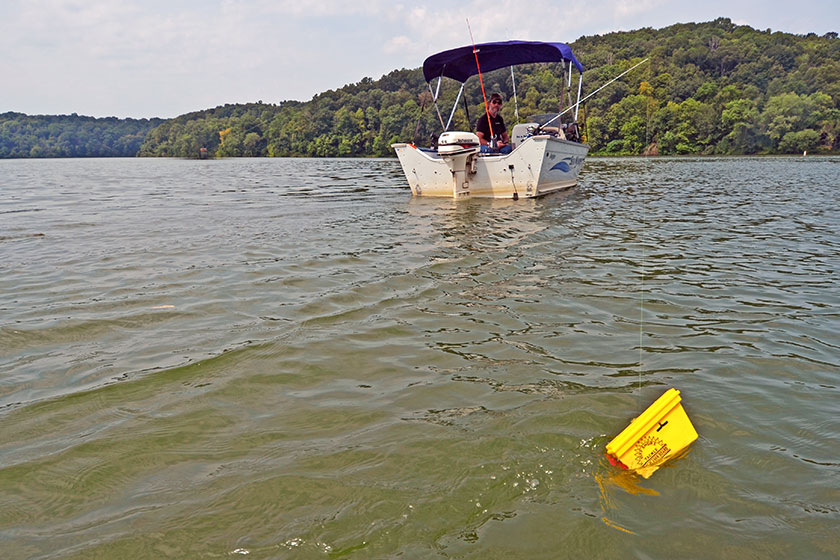
Todd “Skippy” Hoffman began trolling for crappies after he broke his neck on the job as an ironworker 6 years ago. The injury didn’t paralyze him, but the nerves in his arms and hands were so damaged he could no longer cast a fishing rod.
The only way he could continue to catch crappies was to troll for them. What began as an act of necessity has evolved into a refined and productive fishing method.
It is hard to catch fillet-size crappies regularly on the small, heavily pressured reservoirs he fishes in southern Ohio. But he sacks them consistently by trolling crankbaits on flat lines and behind small planer boards.
He claimed that his best fishing takes place when the water climbs above 83 degrees.
“The crappie can’t survive in water that warm,” he said. “They have to go deep where it’s cooler.”
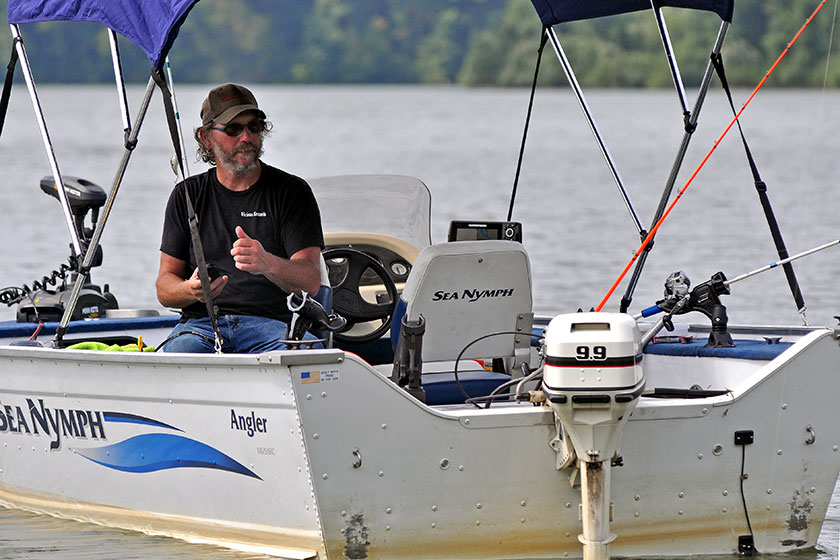
He catches crappies as deep as 25 feet, but his most productive depth range is 14 to 17 feet. Although the crappie will hang below 30 feet on some of the reservoirs he fishes, he leaves these deep dwellers alone.
“When you catch crappie that deep, the small ones you release can’t get back down and they die,” he said.
Trolling Evolution
When he began trolling for crappies, a typical outing would yield three fish. Now he feels anything less than 30 crappies is a bad day. Most of the crappies are undersized and released immediately, but he usually returns to the ramp with several quality fish in his livewell.
His 17-foot Sea Nymph V-hull is ideal for trolling. It is powered by a 9.9 hp outboard, which is the maximum allowed on some of the Ohio reservoirs Hoffman fishes. The boat’s open, roomy interior features a console, two swivel seats and plenty of options for attaching rod holders.
The boat is set up with five rod holders, but Ohio regulations only allow two lines in the water per angler. Hoffman loves to have company aboard so he can put more crankbaits to work.
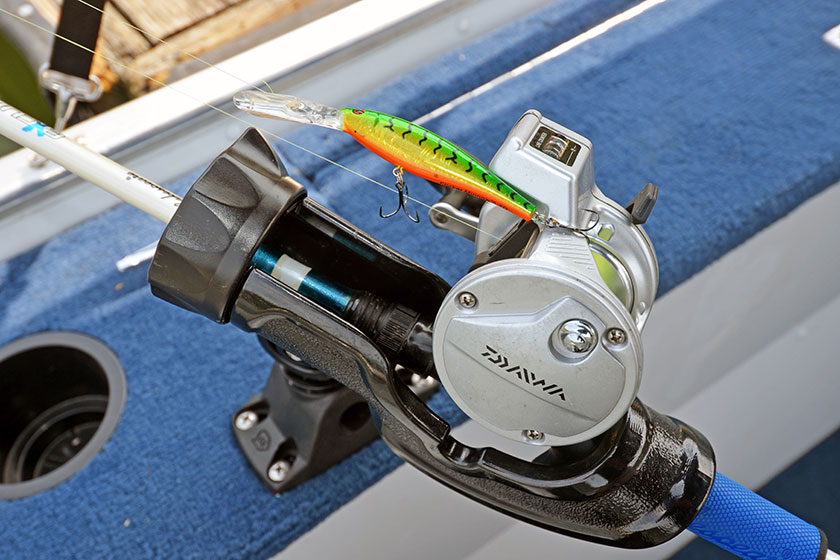
Off Shore Tackle Mini-Planer boards have added a critical dimension to Hoffman’s trolling regimen. They spread the lines for fewer tangles when he has another angler or two aboard. More importantly, they allow him to pick off boat-shy crappies that move away from crankbaits he is trolling on flat lines.
The boat came with a Bimini cover. Hoffman didn’t think much of it at first but learned to appreciate the shade it provides on sultry summer days.
Trolling Tackle
The initial rods he used for trolling were the spinning outfits he would cast with prior to his injury. The rods were too whippy for trolling anything but light jigs tipped with minnows and tiny crankbaits. He pulled these lures as slowly as his outboard would allow, but it was still too fast. These were the three-fish-a-day outings.
“One day I tied on a Berkley Flicker Shad,” he said. “I didn’t troll 100 yards and had a 14-incher.”
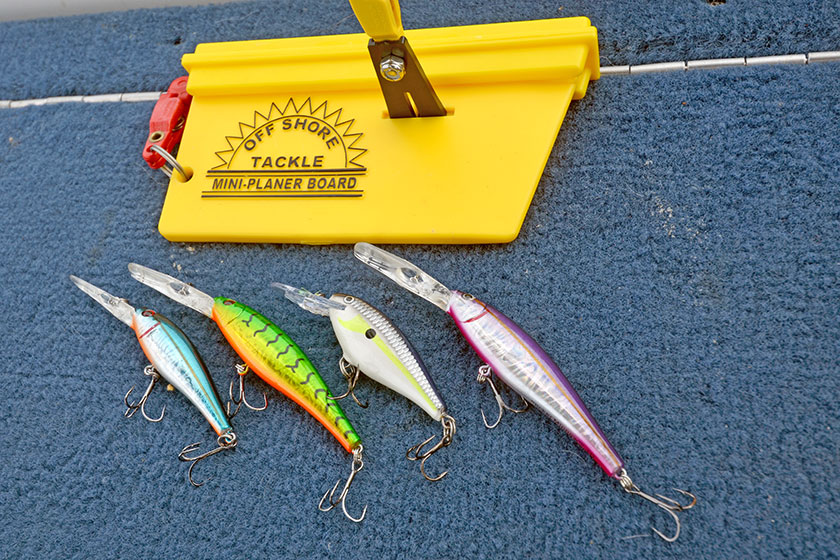
The Flicker shad put him on the path to the deadly trolling methods he uses today. It took several years for him to assemble his current trolling gear and tackle. His primary lures today are Nos. 5, 6 and 7 Flicker Shads and Flicker Shad Pros and the number 5 Shad Rap. He opts for shad colors in clear water and bright colors in stained to dirty water.
When he needs to troll deeper than these lures will dive, he ties a 1-ounce inline sinker an inch below a 3-way swivel, which is 3 to 4 feet in front of the crankbait.
He pulls crankbaits with 8-foot medium action trolling rods matched with line-counter reels filled with 4-pound high-vis fluorocarbon. The rods have the backbone to stand up to the crankbaits and the reels allow him to let out precisely the right amount of line so he can duplicate what’s working. The gossamer line allows the crankbaits to reach maximum depth.
Remote Control
The biggest boon has been the 12/24-volt Minn Kota Torrova fixed to the boat’s bow. This trolling motor comes with a foot control, but he doesn’t have it in the boat. He runs the motor exclusively with its remote control. The Torrova has made his trolling much easer and far more precise. It also communicates with his Humminbird Helix 7 graph.
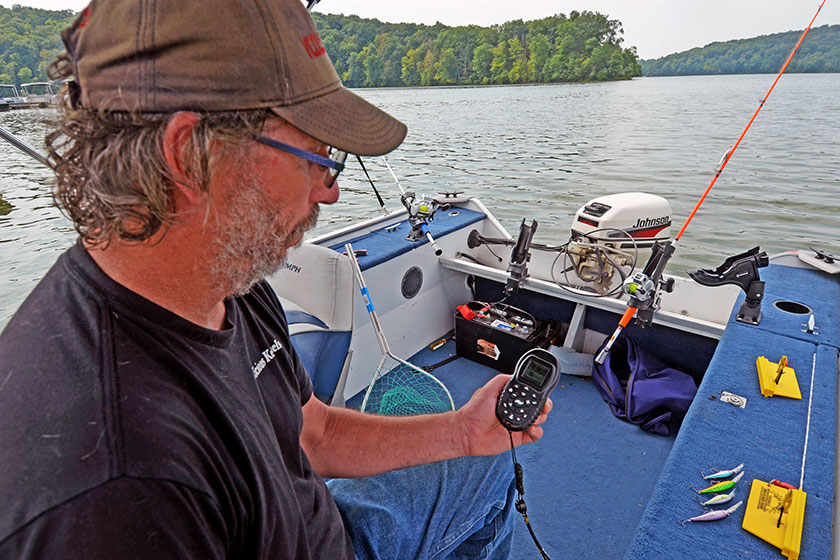
“I can hit a waypoint on my graph and the trolling motor will take me right to it,” he said.
Trial and Error
No matter how good the tackle, boat or electronics, they won’t produce if the angler fails to use them effectively. His expertise comes from old fashion trial and error. One of the lakes he fishes yields fewer bites, but the crappie run bigger on average. He also gets plenty of action with white bass there, which he enjoys.
At the other extreme is a lake where he may handle 50 or more crappies in a day to catch eight or 10 that big enough to fillet knife. Regardless of which lake he is fishing, his basic strategies get the job done.
“You can’t expect to dial-in the bite in 30 minutes,” Hoffman said. “Sometimes it takes hours to figure it out.”
The crappies he sees on his Helix 7 give him an idea of how deep he needs to troll and which crankbaits to begin with.
When fishing by himself, he starts by flat-line trolling with 80 feet of line out on one rod and 100 feet out on the other. If the 80-foot line produces more bites, he sets the line on the other rod at the same distance. If the 100-foot line produces more bites, he sets the line on the other rod to 120 feet to see if a longer line is more productive. He sometimes trolls crankbaits as far as 150 feet behind the boat.
Although he feels a breeze is beneficial, Hoffman has learned that choppy water lapping at his boat pushes the crappie out to the side. Even on calm days the boat may spook crappie suspended only 12 to 14 feet deep.
“Crappie are pretty aggressive,” he said. “If I see them on my graph and don’t get bites with 80 to 100 feet of line out, I’ll drop the baits back to 150 feet and make another pass. If that doesn’t work, it’s time to get the planer boards out.”
Fine Tuning
His trolling speed varies from .8 to 1.6 mph. He tends to troll at the higher speeds in clear water and under choppy conditions. Speeds of 1.4 to 1.5 mph produce about 30 percent of his crappie.
“I do better when it’s cloudy,” he said. “The crappies move up off the bottom a little more then and don’t have as far to go to come up for my crankbaits.”
On lakes that have swarms of small crappie, the challenge is finding the pods of bigger fish. They tend to group by size and the larger crappies are often close to the undersize ones. He calls a school of crappie a “pile.”
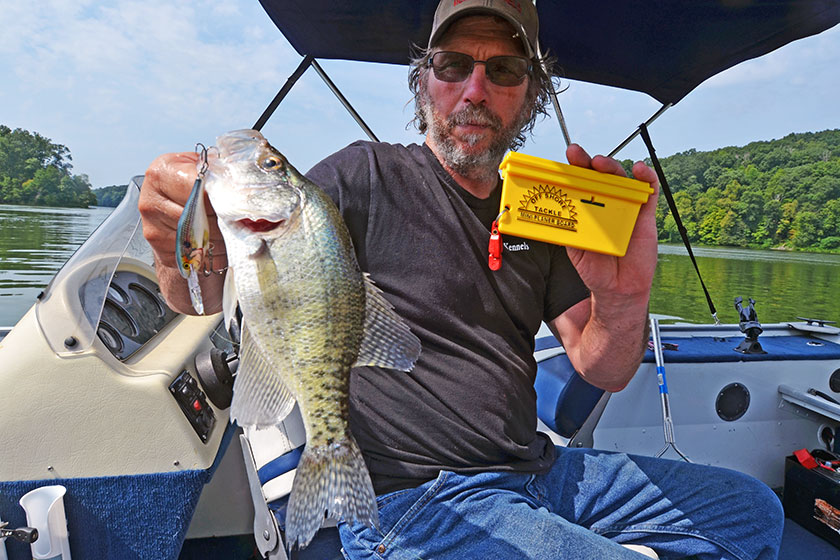
“If the wind is blowing, the bigger fish will be on the upwind side of the pile,” Hoffman said. “They like to hold on defined creek channels. The bigger crappie will get on the upwind edge of the channel most of the time.”







